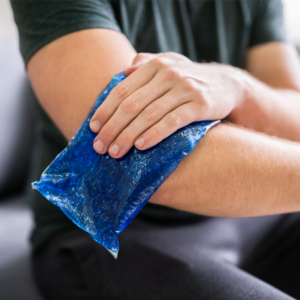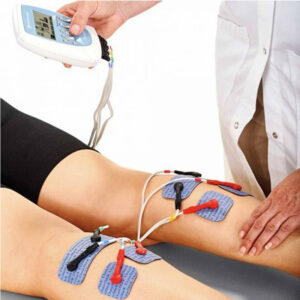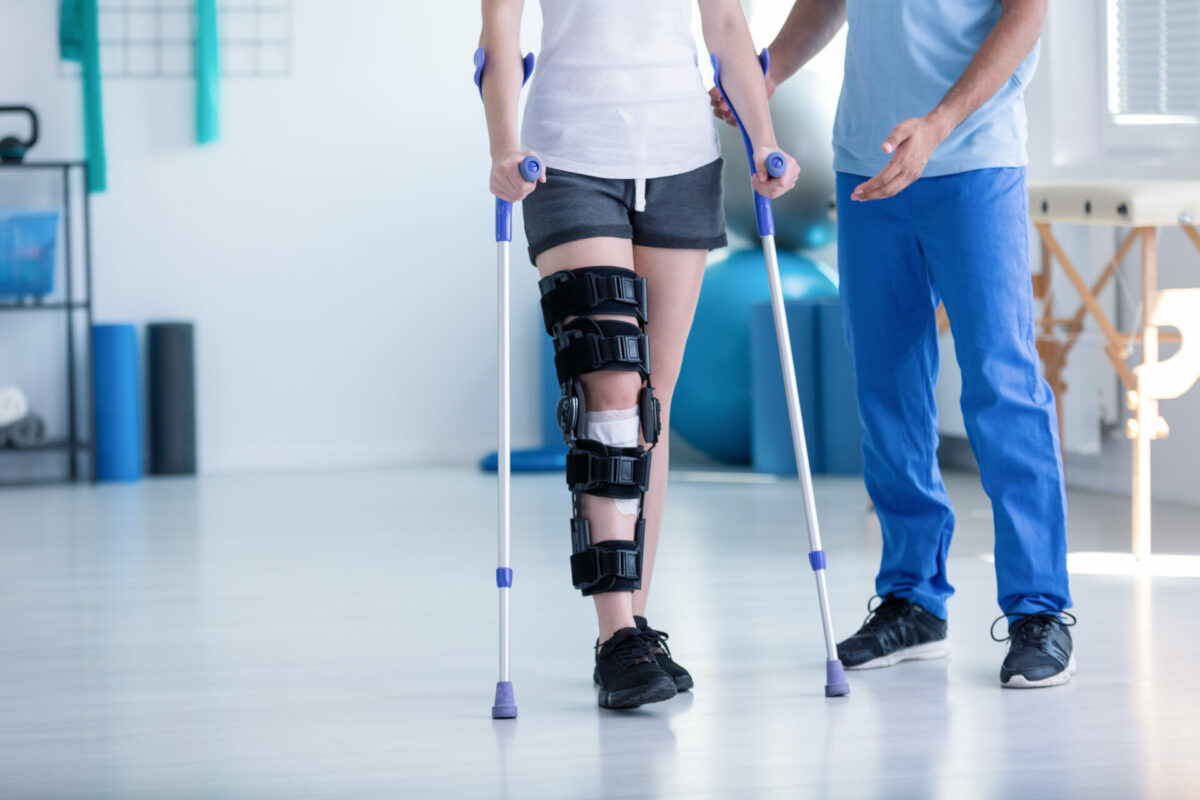Uncategorized
Why is early load important after soft tissue injuries?
Often, in physiotherapy classes, patients after soft tissue injuries (sprains of muscles, ligaments, tendons) have asked “why” and whether it is allowed to perform exercises after injuries at all – at other times even several weeks after the injury, when all the acute symptoms have already passed. However, people tend to be too cautious in avoiding therapeutic exercises. On the contrary, early exercise or exercise is very important for proper soft tissue regeneration and regeneration. That is why in this blog post We will tell you what to do after acute soft tissue injuries.
RICE and POLICE principle.
RICE (Rest, Ice, Compression, Elevation) is a generally accepted protocol for the treatment of acute injuries. It can be used for sports injuries, sprains, dislocations, bruises. The RICE principle recommends that immediately after an injury, reduce the load (or rest) the injured part of the body, make cold applications, perform compression and keep the injured part of the body in a raised position. The idea of the RICE principle is to reduce the pain symptoms caused by acute trauma, the formation of edema and the creation of further tissue damage. However, it is important to understand that the RICE principle is meant for the first 24-72 hours after an injury.
The principle of POLICE (Protection, Optimal loading, Ice, Compression, Elevation) also includes cold, compression and elegance, however, according to this principle, early, optimal and appropriate load is also important, or exercises for the injured part of the body. Of course, it is important to avoid further tissue damage, but this does not mean complete immobilization. For example, after an ankle sprain, this may mean using crutches to relieve load, however, therapeutic exercises should be actively performed – exercises for mobility of the foot joint and exercises for light early load.
Early exertion helps to stimulate the healing process, since soft tissues (muscles, tendons, ligaments, fascia) need this load to recover. Performing exercises early, such as caviar in the muscle, will also help relieve puffiness from the foot and ankles, since the contraction of the ikra muscle helps to eliminate this edema at the eleved position. Early exercise exercise is recommended for most small and medium-sized injuries. Only in cases of more severe injuries may full immobilization be required.
How does early exercise help with soft tissue regeneration?
Treatment of injuries with too long rest or immobilization can delay recovery and negatively affect tissue regeneration and restoration of function. In recent decades, more and more scientific studies prove that early onset exercises have a beneficial effect on soft tissue regeneration.
Early load does not have to be excessive – it must be selected according to the specific situation. The exercise program should be designed progressively, starting from the simplest mobility exercises and continuing with the gradual initiation of loading, strengthening exercises. It is important not to overload the injured part of the body and not to provoke repeated injuries. Early load exercises can include passive and active movements, stretching, manual therapy techniques, strengthening exercises.
Next, with proper treatment, it is necessary to restore the biomechanics and strength of the normal body so that this injury does not recur. It is important to get the full range of strength and movements, as well as to restore neuromuscular and biomechanical activity. When preparing for the final stage, at the end of this stage, you need to have a normal tissue strength.
Soft tissue healing processes.
To better understand the need for early loads and exercises, it is also necessary to take into account the process of healing soft tissues. Any soft tissue injury, such as a sprain of the back of the thigh or an ankle sprain, leads to the healing process of body tissues. This process can be divided into 4 stages: bleeding, the formation of inflammation, proliferation and regeneration. If it is important to use the RICE principle in the first 2 stages, then at 3. and Stage 4 is already important early load. At milder injuries, the early load can already be started at 2. stage to reduce the formation of edema.
At the stage of proliferation, the body forms scar tissue at the site of rupture or sprain, as the tissues heal. The proliferation stage begins 24-48 hours after the injury and can last up to 4-6 weeks, depending on the severity of the injury and the volume of damaged tissues. It is for this reason that discomfort and pain can be felt for a long time after the injury. During these weeks, soft tissue healing takes place actively and new scar tissue is formed.
Scar tissue formation is necessary, however, scar tissue is not very functional or sufficient to be able to resume sports. The formation of scar tissue will inhibit the restoration of function and also cause pain sensations. In order for these scar tissues to be absorbed, it is necessary to start performing early exercises – mobility exercises, stretching and firming exercises. Approximately around 2-3 weeks after the injury, the formation of scar tissue is the most intense and the body at this time begins to regenerate or transform scar tissue into normal tissue so that it is as close as possible to the original function and condition of the tissues. Retention of scar tissue can delay the rehabilitation process and contribute to the risk of repeated injuries. That is why at the stage of regeneration it is necessary to actively engage in the performance of exercises. In this case, a physiotherapist can help you.











